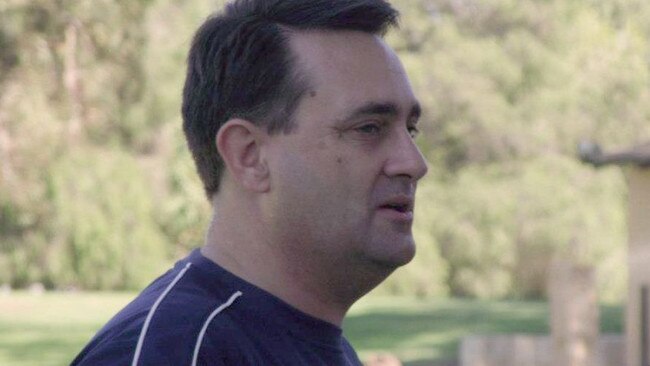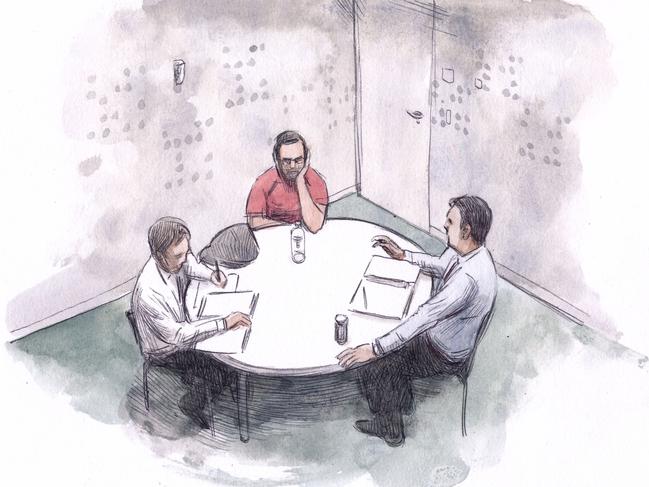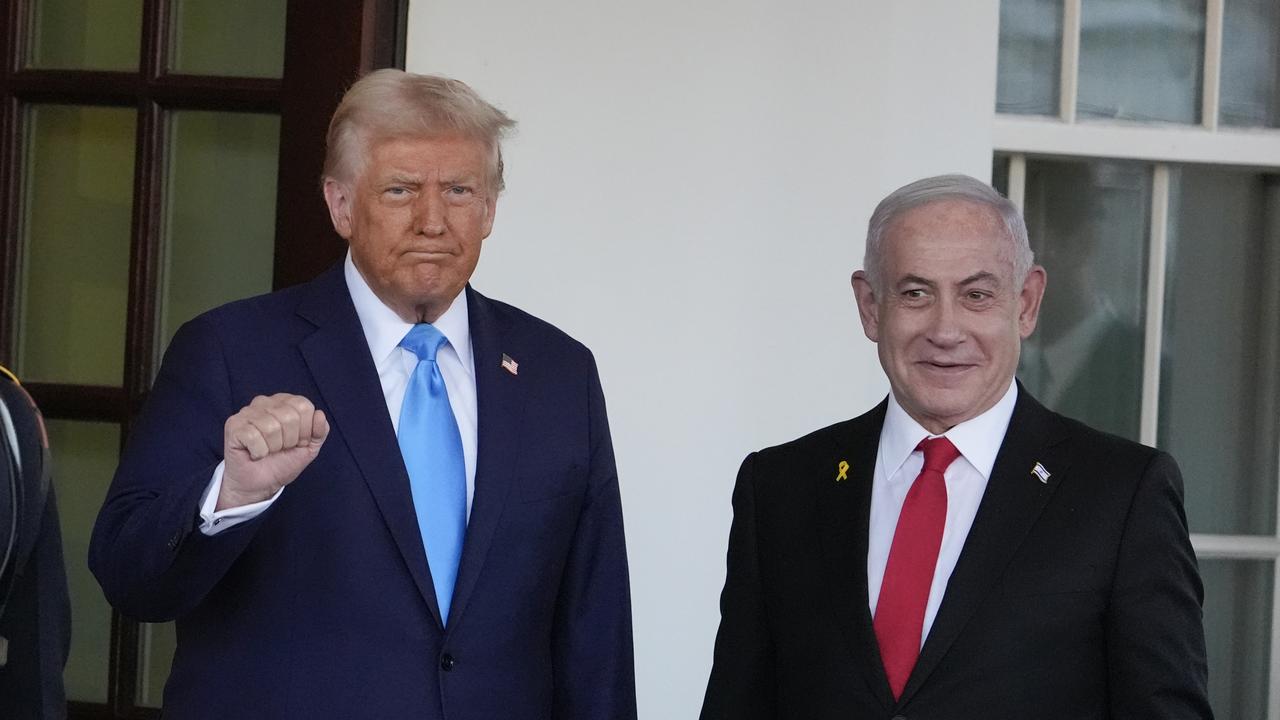Claremont killing: Dramatic video footage shown to court
Dramatic footage from arrest of suspected Claremont serial killer shows a shocked Bradley Edwards protesting his innocence.

His hands bound behind his back, sprawled on the dark green carpet of his modest home in Perth’s eastern suburbs, Bradley Robert Edwards looked bewildered as a detective stood over him and accused him of being responsible for the Claremont serial killings.
“What the f..k?’ he exclaimed as Detective Senior Sargeant Joseph Marrapodi told him he was suspected of murdering Sarah Spiers, Jane Rimmer and Ciara Glennon in 1996 and 1997.
“Why me? Why are you picking me?” he said.
The dramatic footage from the immediate moments after his arrest in the early hours of 22 December 2016, and his subsequent marathon police interview over almost 14 hours later that same day were played in Western Australia’s Supreme Court on Tuesday, giving the public their first chance to hear at length from Edwards.
The families of the three murdered women were in the courtroom for Tuesday’s proceedings, as were Edwards’ parents. The two victims of attacks by Edwards in 1988 and 1995 — crimes he originally denied, before confessing to on the eve of the trial — were also in court to see the footage.
Dozens of members of the public — including cricketer Cameron Bancroft — also attended, packing out the public gallery to capacity.
Edwards, a Telstra technician at the time of his arrest, spent hours discussing the breakdown of his first marriage, his “depression” and his concern for his stepdaughter as he was questioned by detectives.
Edwards appeared emotional early in the interview before answering questions about his background, living arrangements and relationships. He maintained throughout the questioning that he was innocent not just of the three Claremont murders but also two separate attacks on young females in 1988 and 1995.
He talked at length about his tumultuous relationship with his first wife, which started to fall apart in the mid-1990s around the time of the murders.
The first wife, whose name has been suppressed, started a relationship with a boarder who had moved into their house.
“They started sleeping together, she got pregnant and she left,” he said.
He told the detectives he still had feelings for her “in a way” and wished her no ill will, but said “it was pretty hard to move on with your life” given the circumstances around the relationship’s demise.
He said he had felt bad about starting his relationship with the woman when she was still seeing one of his work colleagues.
“I took her from Chris, who was a friend, so I feel like (the marriage’s breakdown was) karma. I regret that,” he said

He told the detectives his parents and her parents had kept in touch after their marriage broke down.
“Her parents told my parents it was the worst decision she had ever made, to leave me and do what she did,” he said.
Prosecutor Carmel Barbagallo has argued that the emotional turmoil from the breakdown of his marriage spurred Edwards to abduct and murder the three women.
Asked early in the interview if he had any medical conditions, Edwards said “only depression”.
He told the detectives he had been to see a doctor about the condition two to three years early but was not being treated.
“He was more concerned about my cholesterol,” he said.
He also said he had limited knowledge of the Claremont area and said he had never set foot inside either the suburb’s Club Bayview nightclub or the Continental Hotel, the two venues that the three women had visited on the nights of their murders.
Edwards also consents to provide a DNA sample during the video while telling officers he is “120 per cent positive” he had no involvement in any of the crimes.
“I just want to go to sleep and wake up and for this all to be a bad dream,” he said.
The 51-year-old was arrested after the Tactical Response Group stormed his home at 7.30am that December morning.
While Edwards’ stepdaughter was living with Edwards at the time, he was alone in the home when he was arrested. Boxes of items belonging to Edwards’ estranged wife can be seen in the background of the video, along with coat hangers strewn across the dark green carpet.
The videos are the final pieces of evidence to be tendered by the prosecution.
The trial, which started in November last year, has heard from hundreds of witnesses including both of Edwards’ ex-wives, several eye witnesses from the Claremont area, and a parade of forensic experts and police.
The past few months have focused on examining the trace DNA from Edwards that was found under two of Glennon’s fingernails as well as an exhaustive assessment of dozens of tiny fibres found on the bodies of Glennon and Rimmer that prosecutors say match Edwards’ Telstra-issued work clothing.
Edwards’ legal team, led by Paul Yovich SC, has flagged it will argue that Edwards’ DNA ended up under Glennon’s fingernails through contamination.



